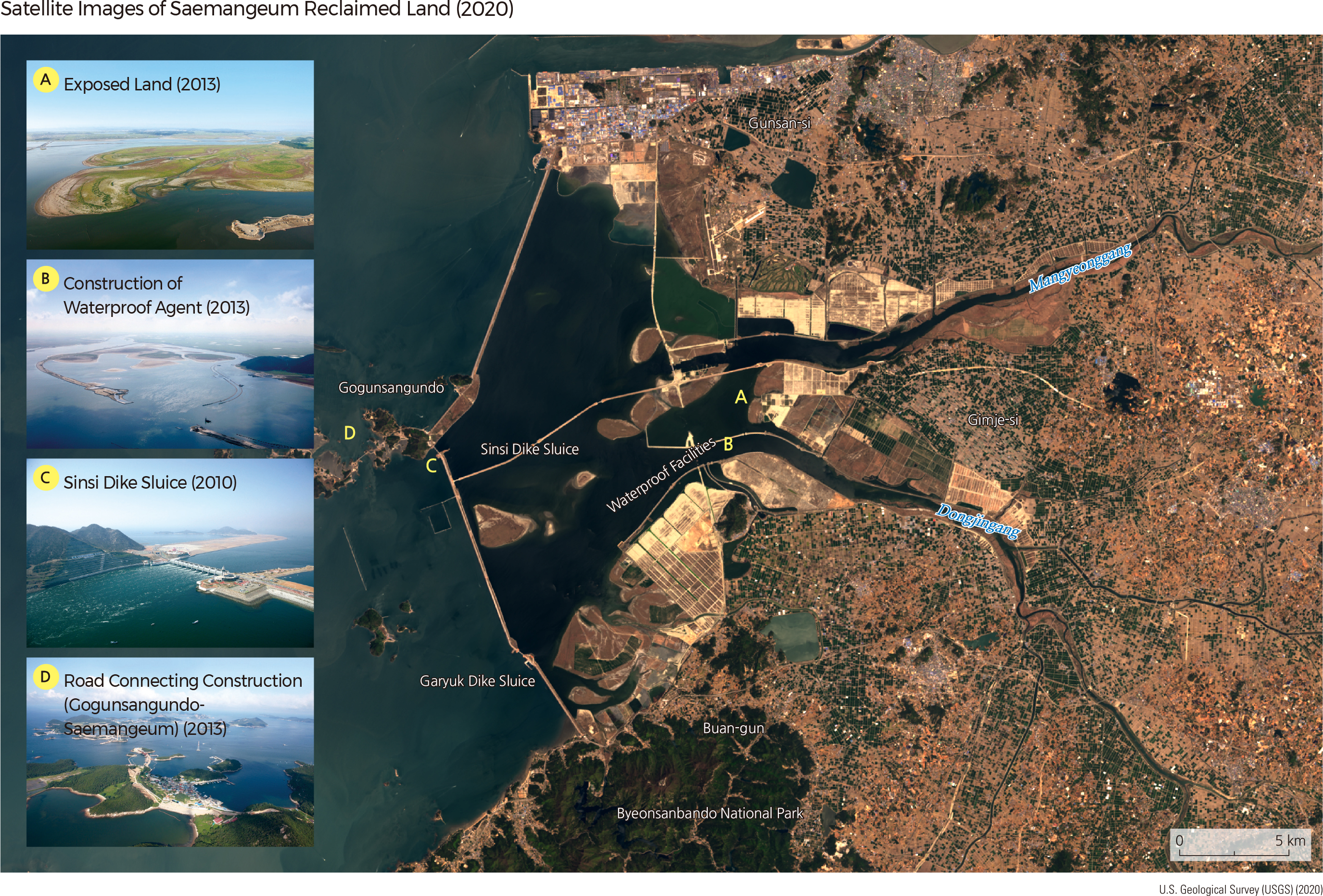Comprehensive Edition 2022
In a densely populated country like Korea, land is very valuable. Many efforts have been made over the years to “reclaim” land from the sea, converting large areas of once-shallow seas into agricultural lands and building sites. Dikes and other protective embankments are placed off the coast to reduce tidal and wave erosion and enable sediment to be deposited in estuaries and along the coastline. The southwest seashore, a deeply indented coast with a shallow marine environment, is especially favorable for land reclamation projects, owing to its extensive, well-developed inner tidal flats.
Land reclamation has been undertaken throughout Korea’s history: for grain production and military provisions during the Goryeo and Joseon dynasties, and for rice production and land development during Japanese colonization. After liberation from Japanese rule, small-scale land reclamation projects were carried out to enhance the food supply and abolish famine. Further projects were pursued for comprehensive agricultural development after the 1970s and for multi-purpose development after the 1990s.
The largest land reclamation project in Korea, and indeed in the world, is the Saemangeum Reclamation Project, which began in 1991 and was completed in 2006. The total length of the embankment is 33.9 km. An additional 28,300 hectares of land and 11,800 hectares of lake were created from the project. The images here show how the area has changed as a result of the project between 1990 and 2020. Current plans are for six types of land to be developed: industrial/research, international cooperation, tourism/leisure, agricultural, urban, and nature/ecosystem.
The Saemangeum project is expected to help the local economy by creating additional land, including rich agricultural space; securing water resources; and creating a tourism district. Some problems have arisen during the development process, including damage to mud flats and water pollution. Restoring coastal ecosystems is an essential task in order to maintain the ecological integrity of the shores and to promote further economic sustainability. |



